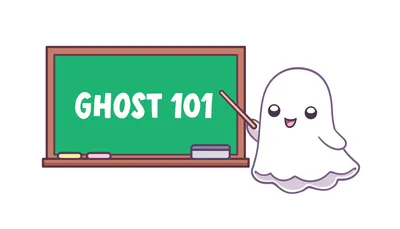How to create content for different users, in the Ghost editor
Need a Ghost page that displays different content to different users, but don't want to edit the theme when it changes? Here's an option.

Update 5/2025: Since this article went to press, Ghost has released visibility settings for HTML cards and the Call to Action card, which also has visibility settings. If you're just getting here today, start with the Call to Action card.
This text is actually in a call to action card with most of the styling turned off, and I can set it to be visible to any combination of paid or free or not registered visitors.
This text is also in the call to action.
You can also style those CTA cards in a variety of ways. I think they're going to be great for sponsored content, but you could also treat them like a fancier version of the callout and/or product card.
Still want to see my old workaround? Read on!
Here's an approach I've used for letting clients set up a page with content for different audiences. In this case, you can pick content for free, paid, and non-members separately.
2025-2-8: It looks like there're improvements to Ghost in process that will make this unnecessary! Hooray for blog posts with workarounds that quickly become unnecessary, I guess! But if you need it right now, here's how:
Edit the theme (a teeny bit)
I’d modify default.hbs. Up in the body tag, within class=" a bunch of stuff ", I’d add something like this:
{{#if @member}} member{{#if @member.paid}} paid {{else}} free{{/if}}{{else}} not-member{{/if}} Make sure that’s within the quotes defining the class for the body.
Add styles
You’ll also need some styles. Those can go into code injection (easiest) or in your theme’s css files (but remember that most themes need their css compiled, which you might not be set up for).
These styles hide the ‘wrong’ content. For example, if the body is marked with “paid”, that means this is a paying member, so they shouldn’t see (display: none) the free-member-content or unregistered-member-content.
In code injection (sitewide):
<style>
body.paid .free-member-content,
body.paid .unregistered-content,
body.free .unregistered-content,
body.free .paid-content,
body.unregistered .free-member-content,
body.unregistered .paid-member-content {
display: none;
}
</style>Write the page
THEN, on your individual pages where you need to control who can see what, you’re going to set up some HTML cards, which you’ll probably want to make into snippets, for convenience. You’re going to have one like: <div class="paid-content">
another: <div class="free-member-content">
and another: <div class="unregistered-content">
And then finally, one that is just </div>. That one is used to close any of the ‘opening’ divs you used above.
[If you haven’t figured out snippets yet, now is the time, so that you can just pull these out of the + menu like they’re cards.]
Now for the fun part - let's set up a page with different content! In the editor, you use the “paid members” snippet before the content that is for paid members only, followed by the closing div snippet after that content. Similarly with the free and unregistered divs, always followed by the closing div.
So now, your content for different user types is in separate divs, and which div the user can see is going to depend on the type of user.
No theme editing?
It's possible to detect the member's status (at least between member and non-member) by using some javascript to detect what the login/account button in the theme says. This is going to depend on the specific theme, but many themes change the text of the button, and you can detect that. That javascript can run in the code injection footer.



